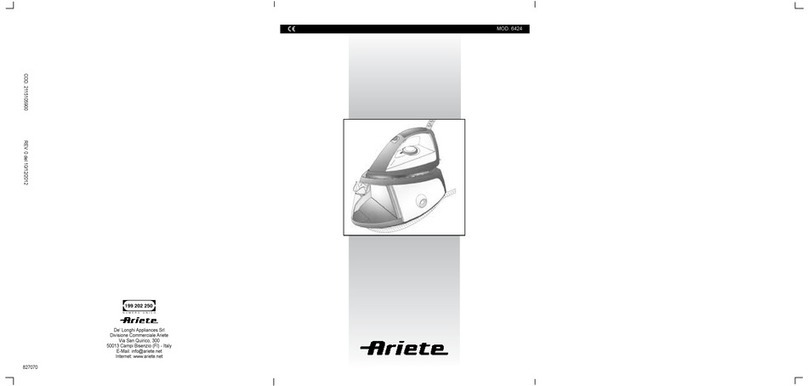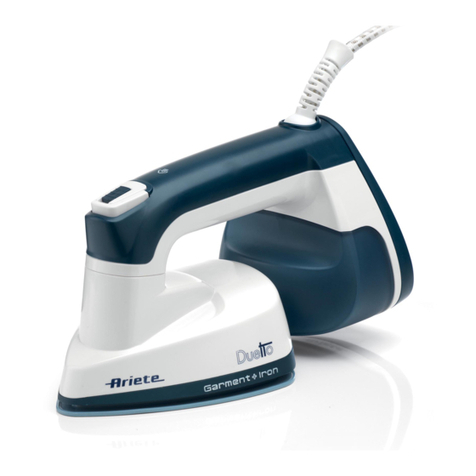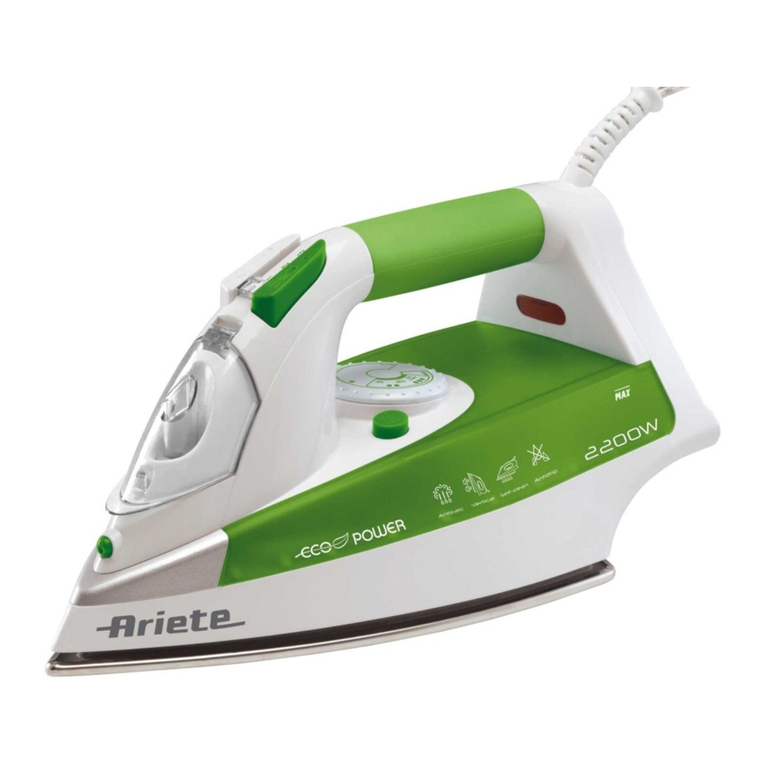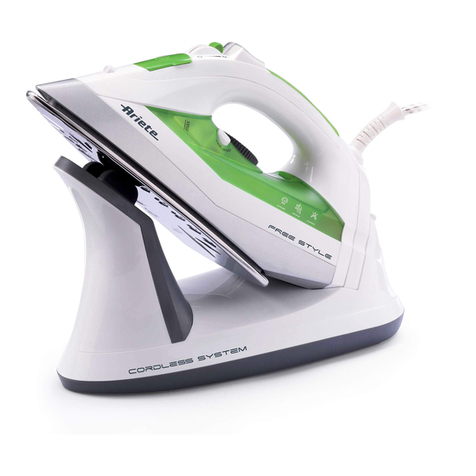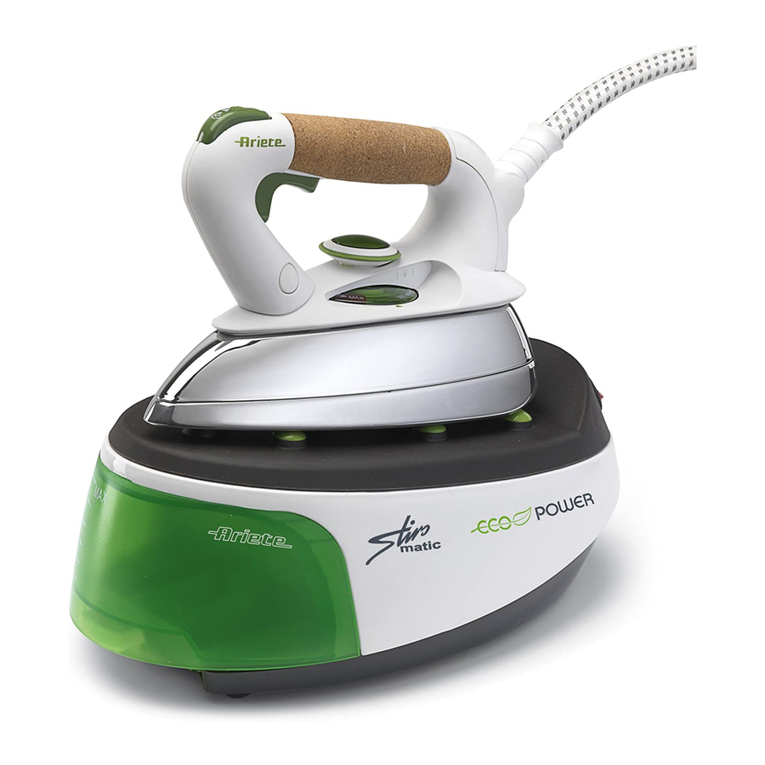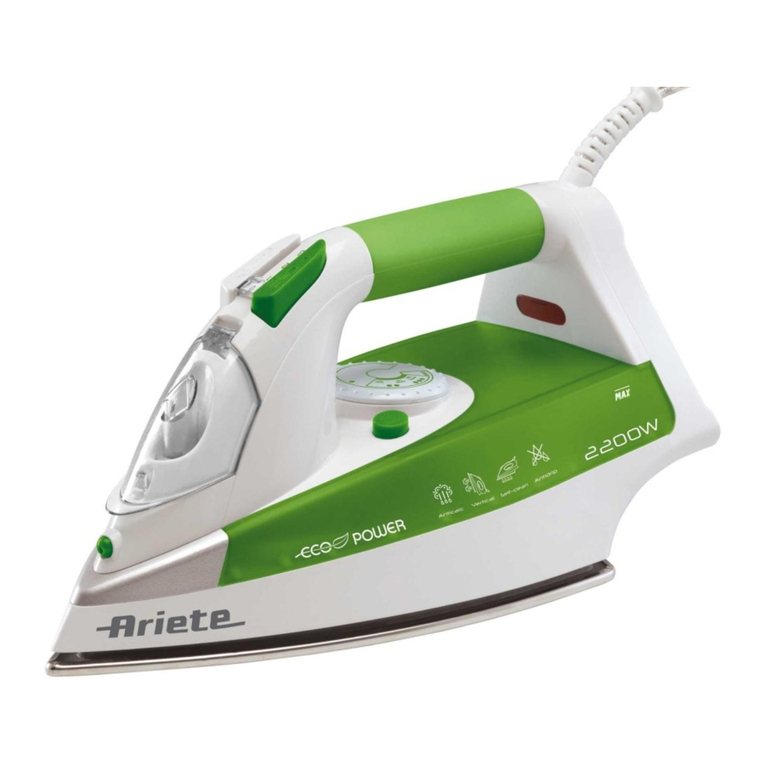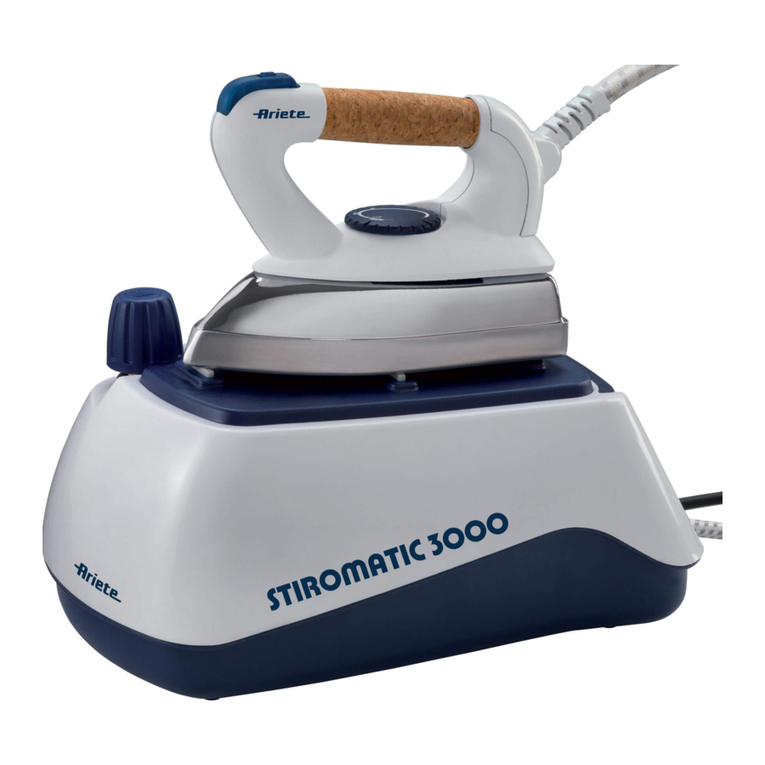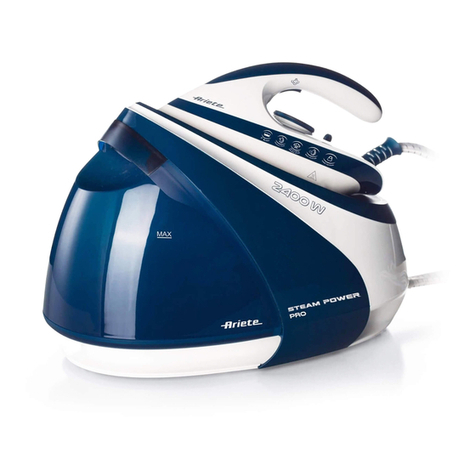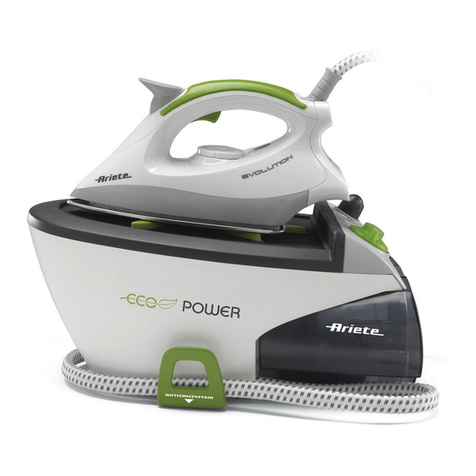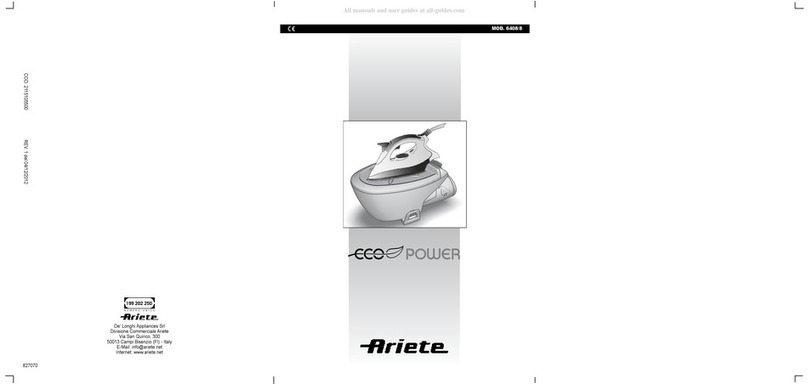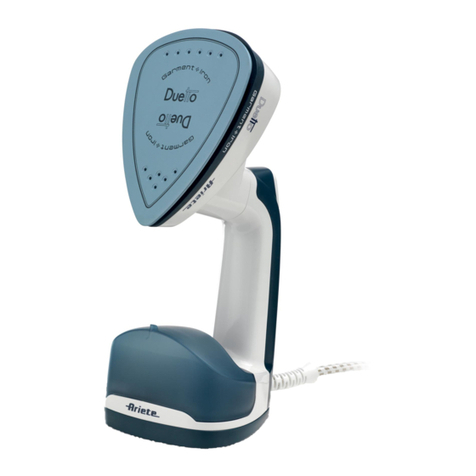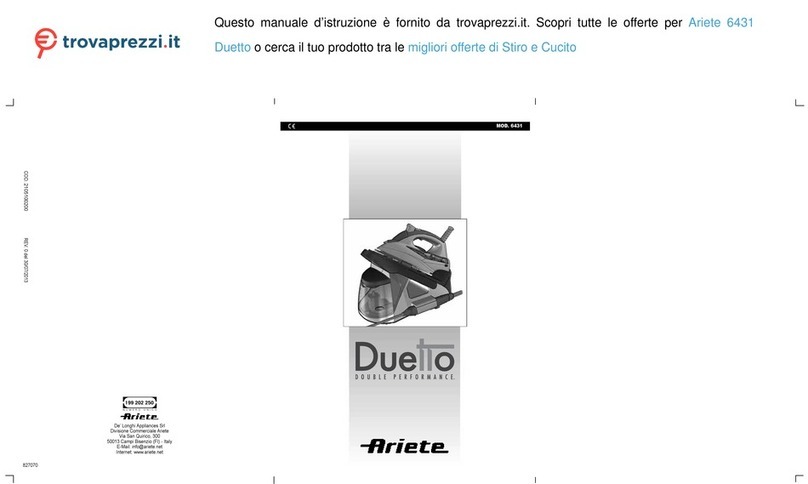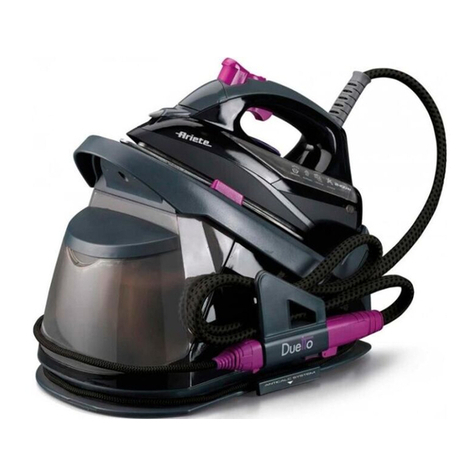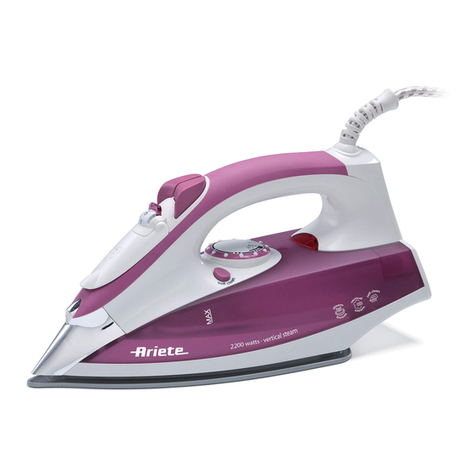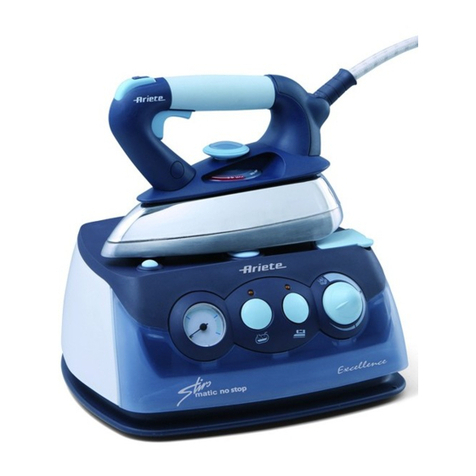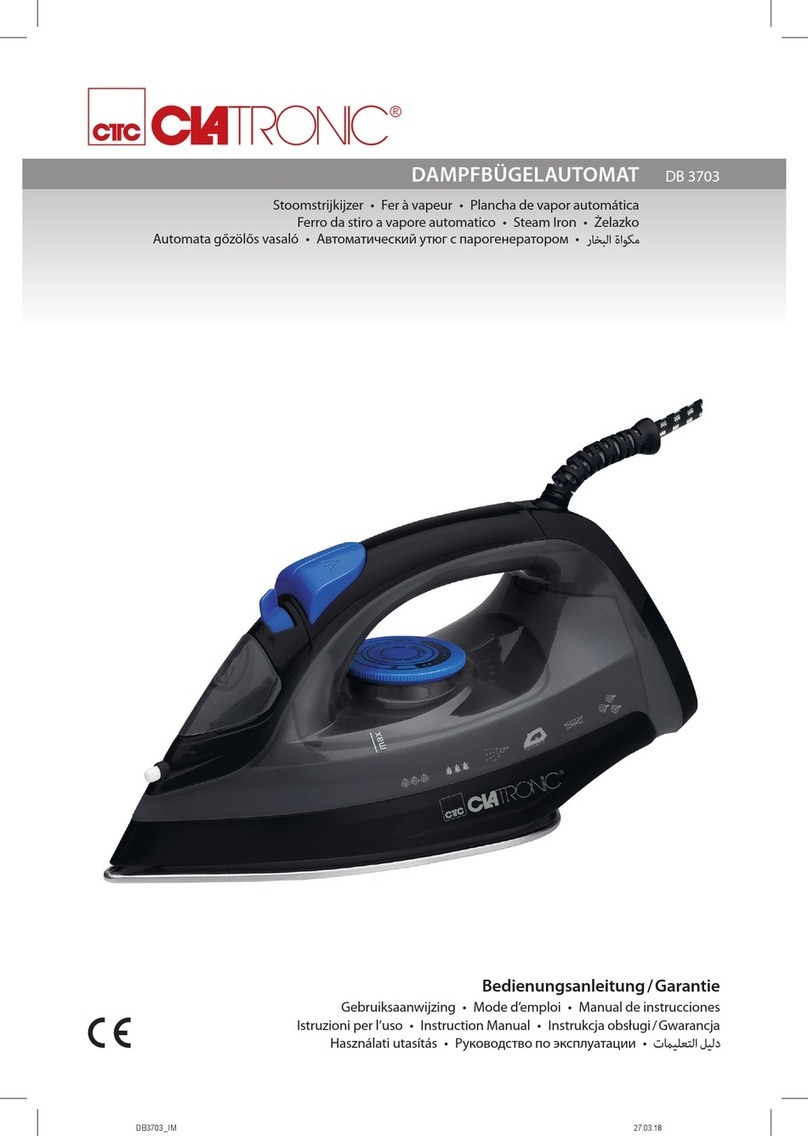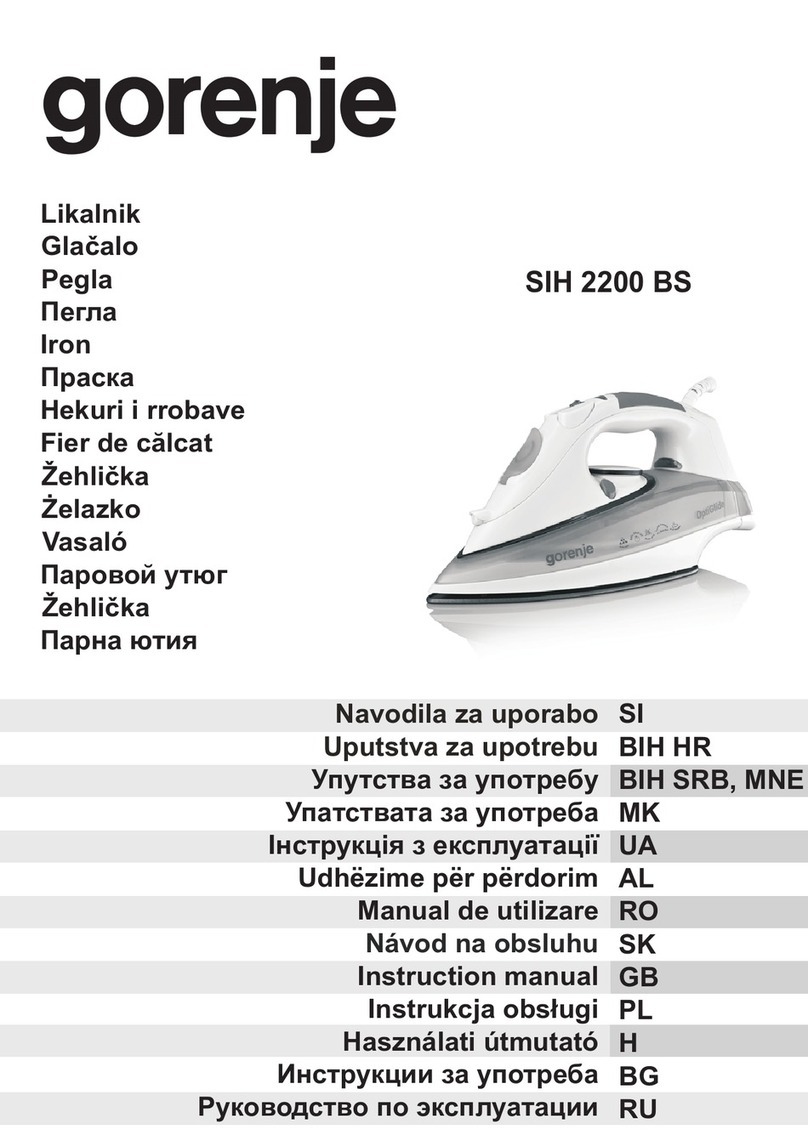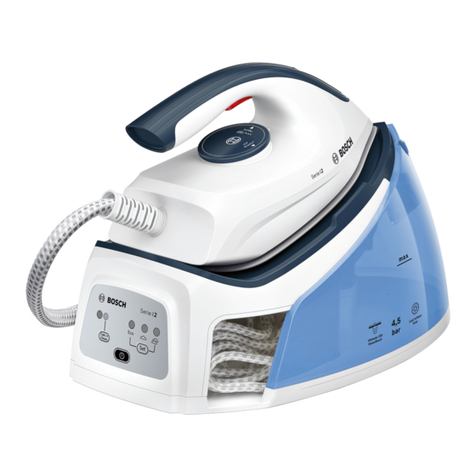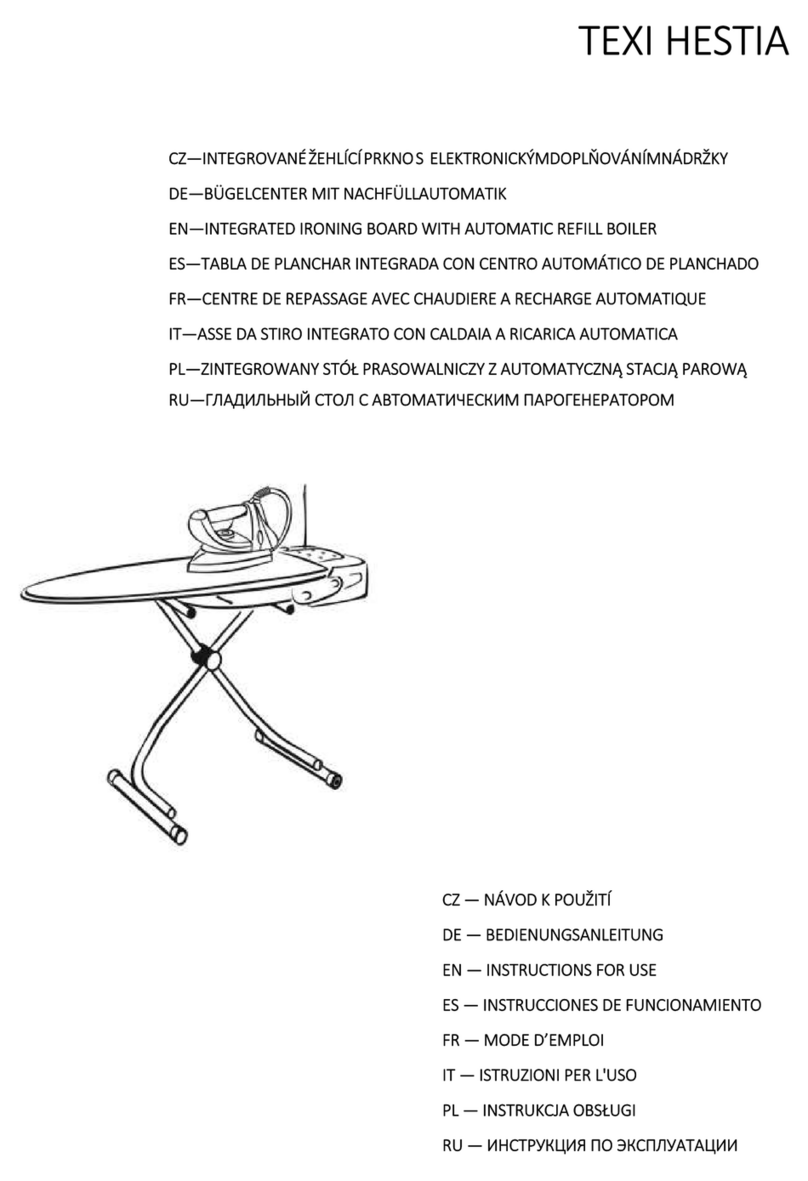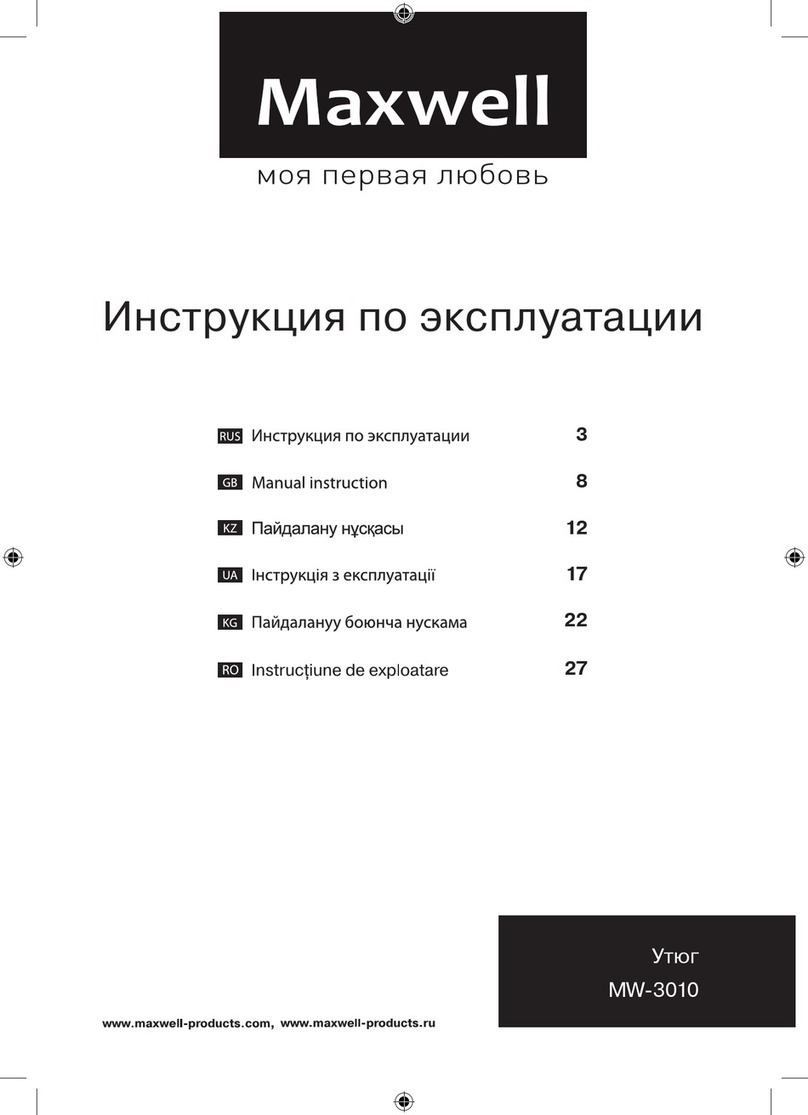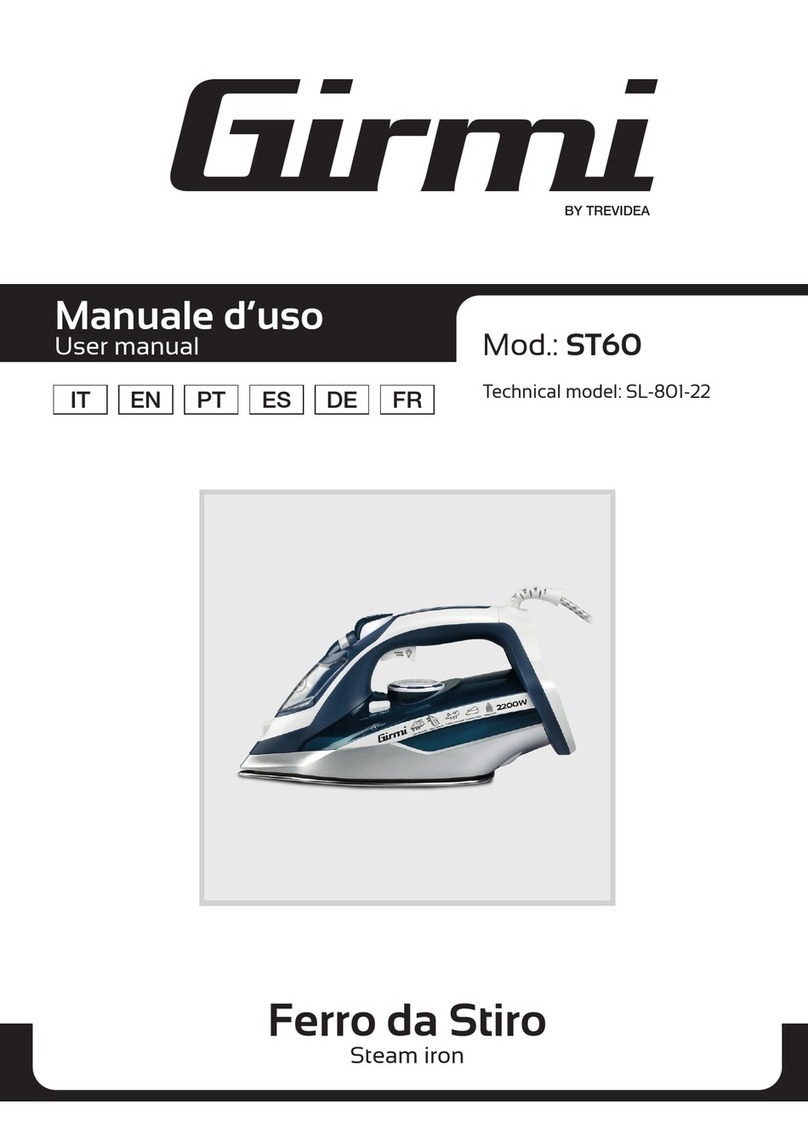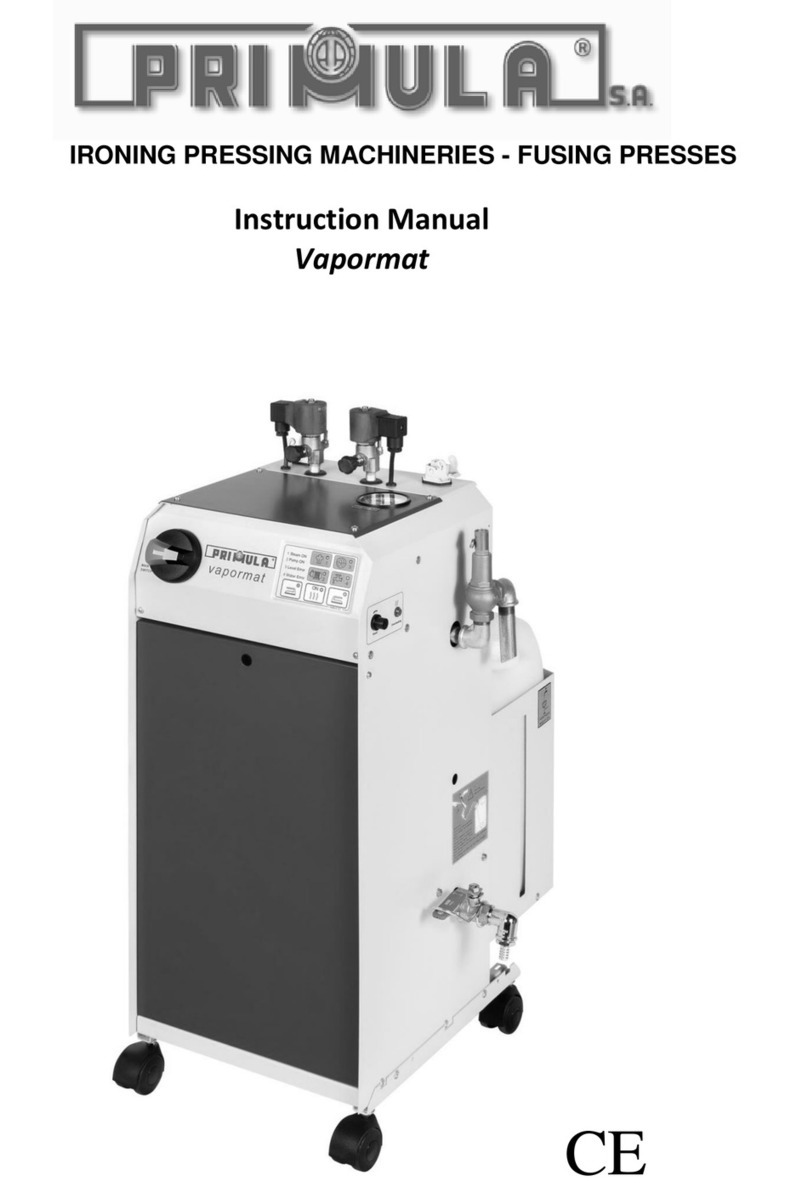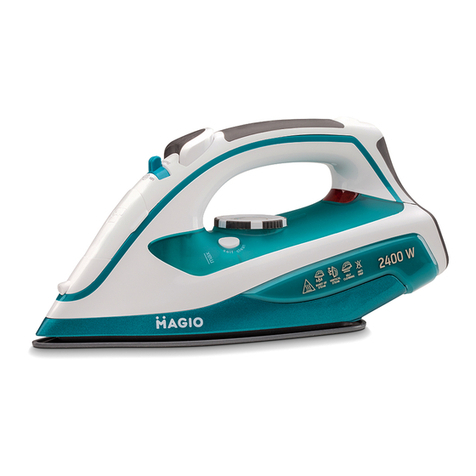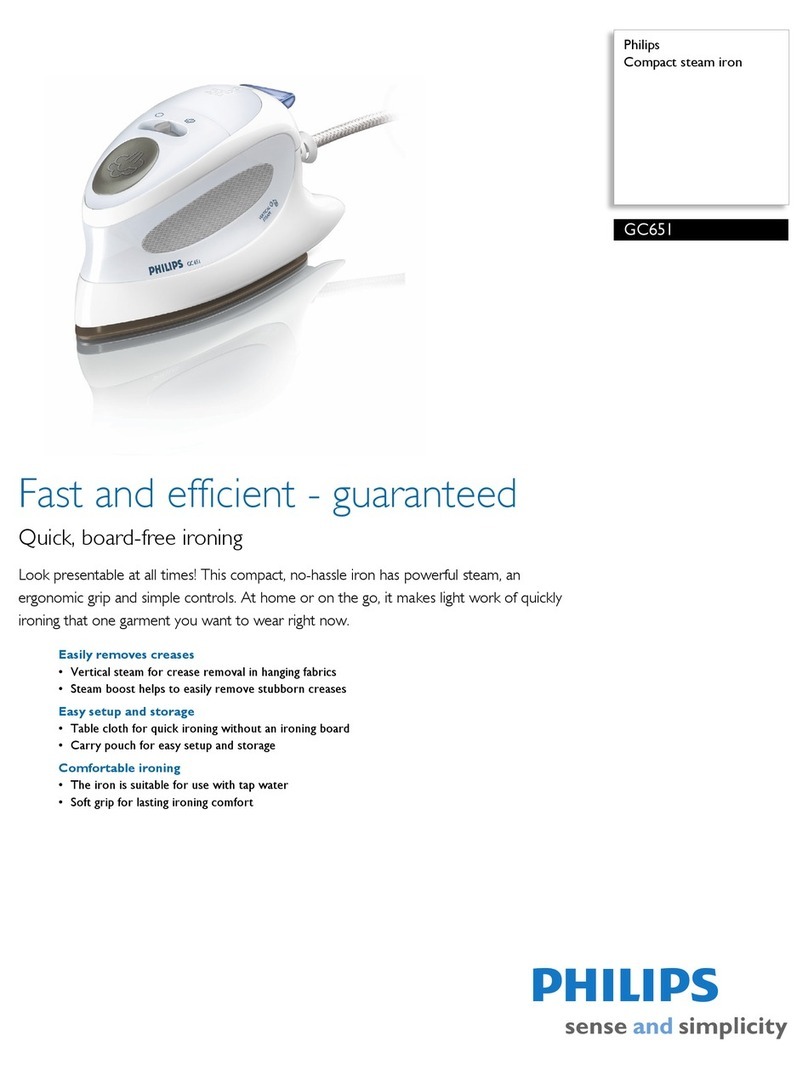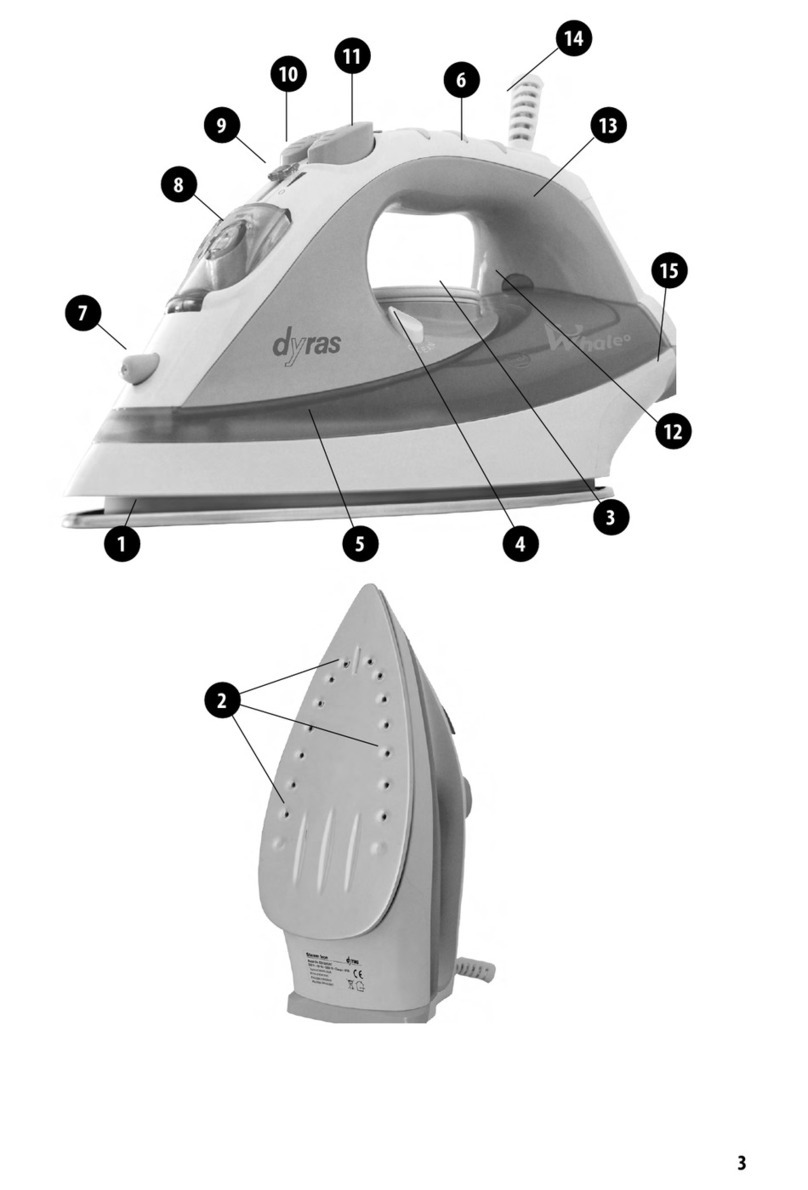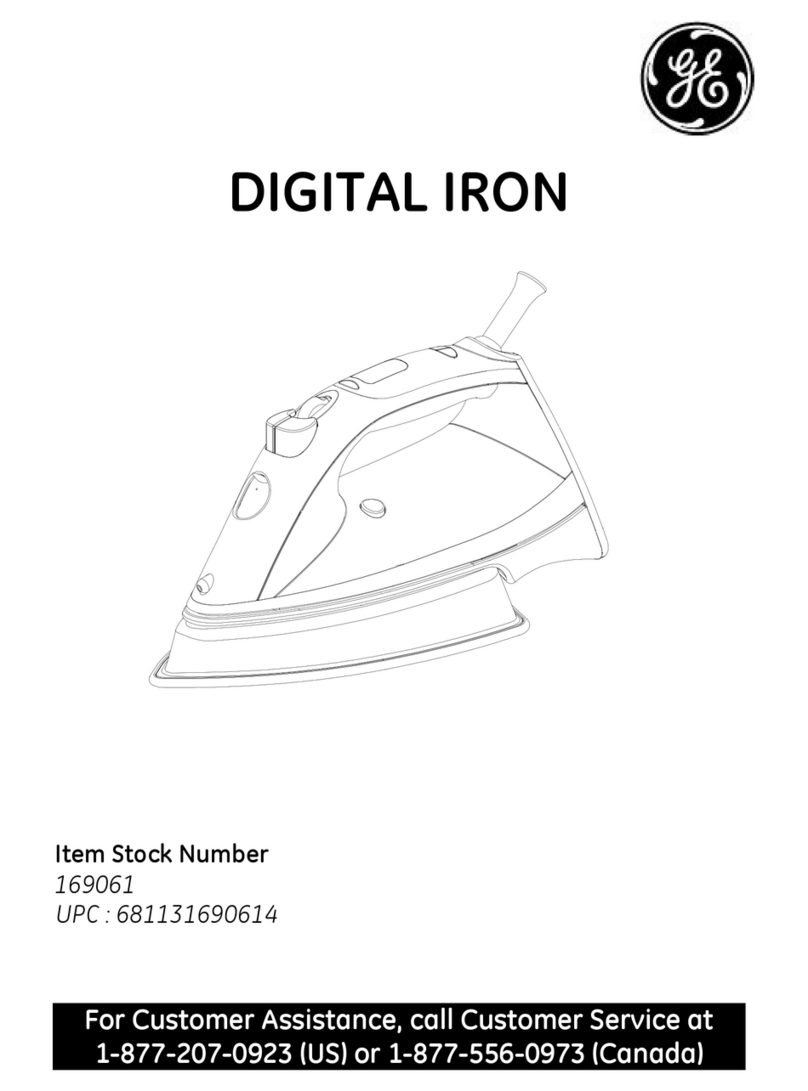
7
Mai utilizzare acqua demineralizzata pura con la cartuccia anticalcare inserita.
Non aggiungere alcun additivo o sostanze chimiche (come ad esempio, amidi, appretti, profumo o altro); pena
l’immediata decadenza della garanzia.
Reinserire il serbatoio (Fig. 9). Premere a fondo no al completo inserimento del serbatoio, no a sentire uno scatto, a
conferma della corretta installazione.
Prima di accendere l’apparecchio accertarsi che vi sia acqua a sufcienza all’interno del serbatoio. Svolgere completamen-
te il cavo di alimentazione.
Collegare l’apparecchio alla rete di alimentazione. Al primo utilizzo, dopo il riempimento del serbatoio, regolare la manopola
termostato (I) oltre il simbolo (•••) ed attendere che si spenga la spia (K). Premere il pulsante erogazione vapore (J) Fig.
12 nché il ferro non emette vapore (occorrerà circa un minuto) Fig. 13.
Alla prima messa in funzione del ferro è possibile assistere ad una leggera esalazione di fumo: si tratta di un feno-
meno perfettamente normale che scomparirà dopo brevissimo tempo. Al primo utilizzo del ferro, provatelo su un
vecchio pezzo di stoffa per eliminare eventuali residui di lavorazione.
Non erogare mai vapore quando il ferro è appoggiato sopra l’apposita griglia (D).
Il ferro viene ora alimentato automaticamente per mezzo di una pompa che ad ogni riempimento si attiva per alcuni secondi
generando un normale rumore di funzionamento (vibrazione). Subito dopo la vibrazione potrebbe vericarsi una diminu-
zione dell’emissione di vapore. È perfettamente normale e dopo pochi secondi l’erogazione di vapore tornerà ad essere
regolare.
Se il ferro rimane inattivo per lungo tempo, prima di stirare si consiglia di tenerlo in posizione orizzontale ed erogare alcuni
colpi di vapore verso terra per stabilizzare il getto ed eliminare l’eventuale condensa.
Impostare la temperatura di stiratura tramite la manopola termostato (I) oltre il simbolo (•••). Attendere che la spia (K) del
ferro sia spenta. Ora il ferro è pronto per l’uso. Prima di dirigere il getto di vapore sul capo da stirare, erogare alcuni colpi
di vapore verso terra per stabilizzare il getto. Quando premete il pulsante vapore (J) dai 3 ai 5 secondi, viene erogato un
intenso getto di vapore. Il getto di vapore si interrompe al rilascio del pulsante. Se il pulsante di erogazione vapore (J) viene
azionato ininterrottamente per più di 30 secondi, possono uscire delle gocce d’acqua dai fori di vapore della piastra del ferro
da stiro, pertanto non insistere eccessivamente sul pulsante (J).
Controllate sempre il livello dell’acqua nel serbatoio durante la stiratura.
Qualora il serbatoio restasse senza acqua si avvertirà una vibrazione ed un rumore più forte. Staccare la spina dalla presa
di corrente elettrica per spegnere l’apparecchio. Estrarre il serbatoio. Riempire il serbatoio direttamente sotto al rubinetto
con acqua naturale fresca (Fig. 7).
Riempire il serbatoio no al livello indicato con MAX. Spegnere sempre l’apparecchio e staccare la spina del cavo
di alimentazione dalla presa di corrente elettrica prima di riempire il serbatoio con acqua.
La cartuccia anticalcare dovrà essere sostituita quando le resine contenutevi avranno cambiato completamente
colore.
Per poter stirare a secco, ovvero senza vapore, dopo aver collegato l’apparecchio alla rete di alimentazione, è sufciente
regolare la manopola termostato (I) alla temperatura desiderata senza premere il tasto vapore (J).
Non utilizzare mai l’apparecchio senza acqua nel serbatoio, anche in caso di stiratura a secco, in tal caso la pompa
potrebbe danneggiarsi.
